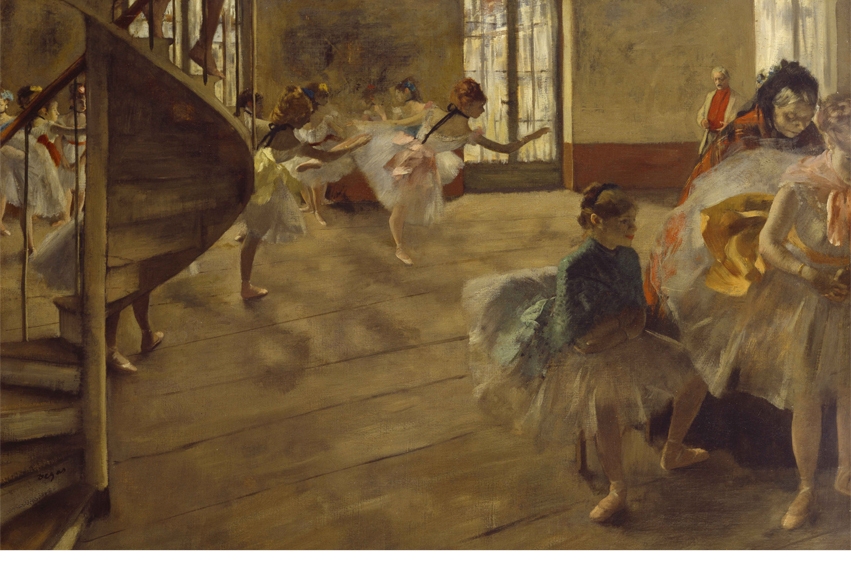Edgar Degas (1834–1917) was born into a banking family, always knew he wanted to be a painter and was fortunate enough to be encouraged in his enthusiasm by his parents. After a classical training he began to paint portraits and history subjects, before seeing the relevance of real life and developing ways in which to depict it.
Influenced by Manet and allied to the Impressionists, he was nevertheless not a committed member of the group and was impatient at its definition of painting. He remained classical in his approach to picture-making but fused this with a keen interest in colour and texture, and an awareness of how photography and Japanese prints had influenced ideas of space and vision. This exhibition aims to show how one of his great themes — the ballet — looks when placed in the context of parallel developments in photography and early film.
Degas was an artist deeply interested in photography as an adjunct to and tool of contemporary life. He used its language in his paintings and drawings (famously in the unconventional cropping of images), he even took photos himself, but the crucial thing to remember is that his own work as a painter and sculptor utterly transcended photography. There is no question of equality here, though this exhibition might seem to suggest it. To my mind, there is rather too much emphasis on photography, which is used to pad out what might otherwise seem rather a slim display of some 80 paintings, sculptures, pastels and drawings, spread out through the RA’s first-floor galleries.
This exhibition is, in some ways, an excuse to put together a group of paintings, drawings and sculptures which have long been popular with a wide public, under the guise of doing something new.








Comments
Join the debate for just £1 a month
Be part of the conversation with other Spectator readers by getting your first three months for £3.
UNLOCK ACCESS Just £1 a monthAlready a subscriber? Log in